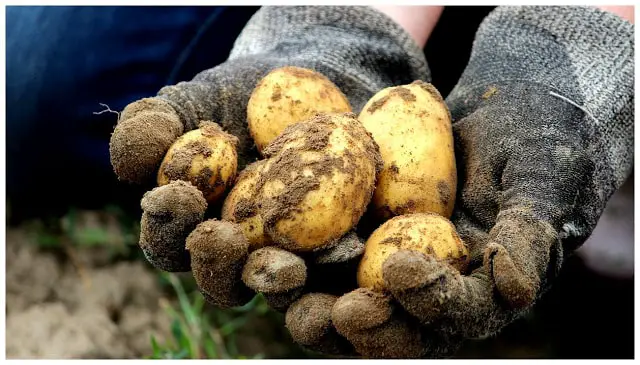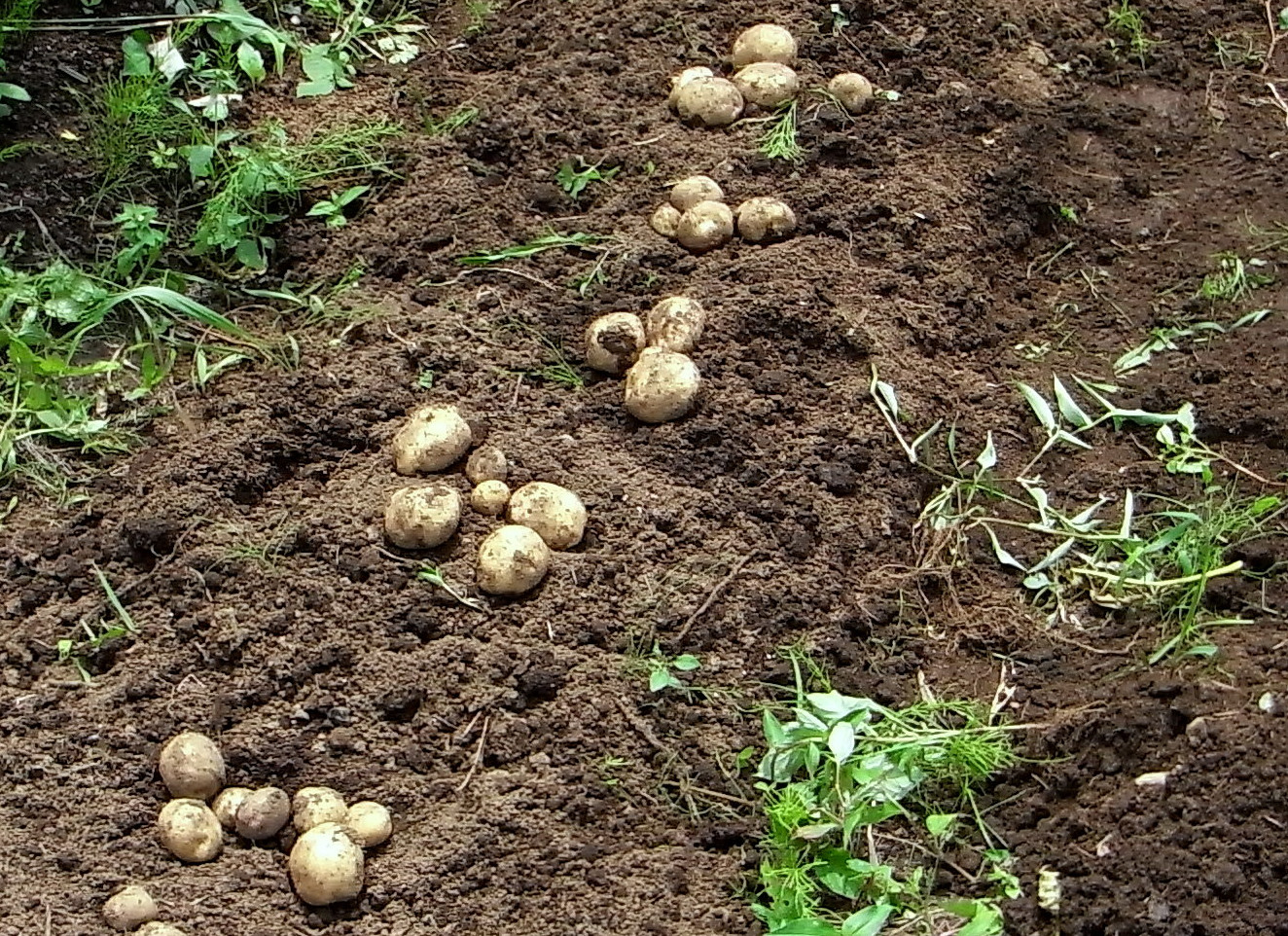We use affiliate links to run our site. When you buy through links on our site, we may earn an affiliate commission, without any added cost to you. Learn more
If you’re asking yourself why your potatoes are small, you’re not alone. Many potato growers go through the same thing. Maybe you’ve tried different fertilizers or amended your soil, but nothing seems to work. The good news is, there are a few things you can do to help your potatoes grow bigger.
Potato harvest can mean two things, one, the number of potato tubers per unit area, and number two, the size and the weight of an individual tuber. Your potato yield will be high when you can achieve a large number of tubers that are large enough both volume and weight-wise.
There can be many reasons why you fail to achieve any or both of these results. Your homegrown potatoes may be too small, or the number of potatoes per unit area is far less than your expectation.
In this post, we will discuss what are the main reasons for small potato yield and what you can do to prevent this from happening.
Some of the main reasons why your homegrown potatoes are small can be irregular watering, lack of nutrients, lack of sunlight, higher soil temperature, or a particular potato variety that yields small tubers.
Let’s discuss these in detail…
Nutrient Deficiency:
There are quite a few macro and micronutrients that are essential for a potato plant. These elements take part in the tuber formation and overall growth of the plant.
Elements like nitrogen and potassium help plants during vegetative growth, tuber formation, and bulking, and the plant needs them in huge amounts. Whereas phosphorus is more required in the earlier growth stages of the potato plant.
Potatoes also need trace elements like Boron, Copper, Manganese, and Zinc for growth and tuber formation.
So as a potato grower your job is to make sure you choose a fertilizer that is well-balanced in those nutrients. If you buy fertilizers, make sure it has all those nutrients in them. You can also prepare a good quality compost so that both macro, as well as microelements, do not get missed out.
Soil pH plays a part in nutrition. To make sure your potato plants can take the nutrients properly make sure the soil pH is around 6.0 to 6.5
Lack of Sunlight
Potatoes grow best in a full-sun location. This means your potato plants should get at least 6-8 hours of daily sunlight. This sunlight is critical for producing tubers underneath the ground. So if your plant doesn’t get enough sunlight this will result in small tubers or in extreme cases no tubers at all.
Although, your plant might look well and healthy from the outside the production of tubers suffers a lot if it doesn’t get the required sunlight.
So always plant your potatoes in an area where they get enough sunlight, and also make sure no taller plants are nearby to block that sunlight from reaching the potato plants.
If you are growing potatoes in containers keep the containers on the south-facing windows.
Improper Watering
Water is crucial for your potato plants. They need a lot of water, especially at the time of tuber formation. If the plants do not get this at the time of tuber formation, the yields will be very less.
Here are some things you can to do solve this issue:
Add a layer of mulch on top of the soil. This will conserve water and also stop weeds from growing.
Add plenty of organic material like compost, manure, etc with the soil before planting potatoes. Organic matters not only increase the fertility of the soil but also holds water for longer. This is especially true if your soil is sandy soil.
High Temperatures
One of the other most common but often neglected reasons that cause low potato yields, is higher temperature. It can cause a fewer number of tubers as well as small-sized ones.
The ideal temperature for growing potatoes is between 60° and 70°F, and once the temperature reaches above 80°F the tuber production starts to fall.
A probable solution to this problem is using shade clothes to cover your potato plants during the hottest part of the day. Using a thick layer of mulch can also cool down the soil.
The best time to plant potatoes is in early spring. Plant your potatoes 2-3 weeks before your last frost date, and you will have the best possible yield.
Harvesting Too Early
Like every plant, your potato plants also need a particular amount of time to mature. If you are not giving your plant the required time, the tubers will remain small and immature. If you find that the skins of the tubers and rubbing away very easily this probably means they need more time to grow.
Ideally, you should wait for a week or so once the foliage dies out to harvest your potatoes. This way you will ensure the tubers get all the nutrition to grow themselves to large sizes.
Potato Variety:
Last but not the least, choose the right variety of potato plants for growing. Not all potato varieties produce the same-sized tubers.
If you are growing a potato variety that produces small to medium-sized tubers no matter how good the conditions are for growing potatoes they will never grow large-sized tubers.
So if you really want to grow large potatoes choose a potato variety that grows large tubers.
Some Useful Tips For Increasing Your Overall Potato Yield:

- One of the most common mistakes people do when growing potatoes is that they wait too long to plant potatoes. Remember, potatoes need cool soil to grow tubers and if the soil gets too warm during the growth stage, your yields will reduce.
- The next important thing is watering your potato plants. Potatoes need plenty of water to produce tubers. If you are not watering your plants regularly, especially if they are in containers, sandy soil, or very hot environment like rooftops, you will see a drastic fall in the number of potato tubers.
- Are your plants overcrowded? This is one of the very common reasons behind small-sized tubers. During seed potato planting you need to give the plants enough space so that the tubers can grow both in numbers and in volume.
- Make sure the soil is not compacted. Soil compaction can result in abnormal or reduced tuber sizes.
Now, armed with all this information we are sure you will get a better result next time you grow your potatoes. For more information on potato growing, you can see these articles.
Amazon and the Amazon logo are trademarks of Amazon.com, Inc, or its affiliates.

Hi there! My name is Prasenjit and I’m an avid gardener and someone who has grown a passion for growing plants. From my hands-on experience, I have learned what works and what doesn’t. Here I share everything I have learned.
